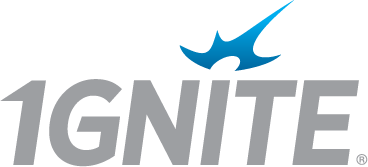4 Proven Steps to Successfully Implement an Internal Market Place
Use the Assets you Currently Have BetterImplementing an internal marketplace successfully is the most effective and efficient way to make the best of your company’s existing assets as well as to free your business from being tied to a global supply chain that is volatile at best in a post-pandemic landscape.
However, developing an Internal Marketplace that allows unused assets to be dynamically deployed throughout your organization involves a lot of moving parts and may seem like an insurmountable project at first glance. At 1GNITE, we have experience designing and implementing these programs and have put together a step-by-step guide that highlights the 4 steps to implement an internal marketplace successfully:
1. Secure Supply Chain Executive Leadership & Adequate Staffing
Just like any other program in your operation, you’re going to need the right people in the right positions – starting with a supply chain expert. This candidate needs to understand the intricacies of building a flexible, internal supply chain, as well as the ability to see the “big picture”. This person is the champion of this program and will be directly responsible for its success.
Additional staffing needs to be adequate for the program. This isn’t the kind of situation where you can just add tasks to existing employees. Your program either needs its own team of employees to manage it, or it needs to be outsourced to a vendor that has experience with dynamic resource deployment solutions.
2. Identify Clear Goals for the Projects
Project goals provide you with direction. Like a roadmap, these goals are designed to provide your program with achievable, measurable results that move the program forward. Some basic goals you should look to achieve are:
- Reduce cost by re-using assets instead of purchasing new ones.
- Faster delivery of resources, without reliance on outside vendors.
- Streamlined operations and improved responsiveness – less downtime.
- Increased customer satisfaction.
- Reduced environmental footprint.
- Optimized inventory, facilitate enhanced demand planning and forecasting for asset purchases and lifecycles.
- risk mitigation – redundancy for critical equipment and resources at the store level.
3. Create a Baseline, Key Metrics, and Timeline
To identify your successes and the progress of your program, you need to start with where you are on day one. This means assessing inventory, current resource needs, current wait and delivery times on new equipment, costs, and any other data related to what you have now. Then you need to establish the key performance indicators (KPI’s) that matter most to your program. If cost reduction is your main goal – track how much money you save by re-using an asset instead of purchasing new. If saving time is the goal, track how much faster you can get a used asset in place versus having to wait for a new one. As you start measuring the important KPIs, you can establish a timeline to determine where you are with your program, and where you want to go. Off all the steps to implement an internal marketplace, creating a baseline is the most important.
4. Design Around your Operations and Users
Every program is different and will have its own complexities. The key to a successful implementation of your internal marketplace is to ensure it is built from the ground up to handle whatever challenges you might face. The backbone of your program needs to be a strong technological foundation that’s built on your organization’s existing workflows and processes. Not retrofitting existing workflows to your new program is the key to ensuring maximum usability for end-users.
The benefits of a Dynamic Internal Marketplace have already been seen by some of the nation’s largest retailers, and the results speak for themselves. 1GNITE has experience developing, implementing, and managing these types of programs, and we would love to hear what challenges you’re having, and more importantly – how we can fix them. Contact us today and let us find solutions to your asset supply and deployment issues.
-
Circular Economy Definition: Everything You Need to Know
-
Top 5 Benefits Of The Circular Economy
-
The 4 Most Important Circularity Metrics to Measure Your Success in 2022
-
Circular Economy: 6 Fastest Ways To Become Circular
-
How Sustainability is the Key to Solving Supply Chain Issues
-
5 Benefits of an Internal Marketplace You Must Know









